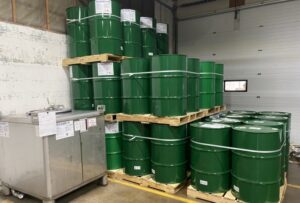Why Vapor Degrease? – Benefits of Vapor Degreasing
Learn more about the many benefits of utilizing vapor degreasing technology for your parts cleaning!
Learn more about the many benefits of utilizing vapor degreasing technology for your parts cleaning!
Here at Enviro Tech International degreasing solvents are all that we do, and thus we understand the importance of a high quality standard for precision cleaning in the manufacturing process. We also understand that much thought goes in to deciding not just what products are selected for use in critical cleaning, but that the methods in which these products are to be used are equally important.

NEXT-HD Pro is a replacement solvent for TCE and PERC. NEXT-HD Pro is Enviro Tech’s newest 1,2 trans blend using no HFC’s. This solvent blend is perfectly suited for vapor degreasing in modern equipment and general cleaning. Its solvency for hydrocarbon soils is superior to most similar high-trans fluorinated solvent blends.
When selecting a parts cleaning method, facility managers must keep many factors in mind. One of the most pressing things to consider is the environmental impact of the method chosen, and the need to remain compliant with environmental protection regulations. However, cost containment is also always an essential consideration when selecting any industrial process.
All chemicals should be treated with respect, and solvents are no exception. In addition to implementing and enforcing proper handling procedures, it is important to store the solvents used in your workplace in a safe and organized manner. Proper chemical solvent storage safeguards human health, protects the environment, and helps prevent costly waste.
Implementing these solvent storage best practices in your lab, shop or manufacturing facility will prevent accidents and protect your workers’ health.
Some common chemical storage practices are actually quite dangerous. Look out for these red flags in your facility.
Chemical solvents are useful and necessary, but it is important to store them safely. Use these guidelines to educate your employees in the proper way to store chemical solvents to help keep your workplace safe.
